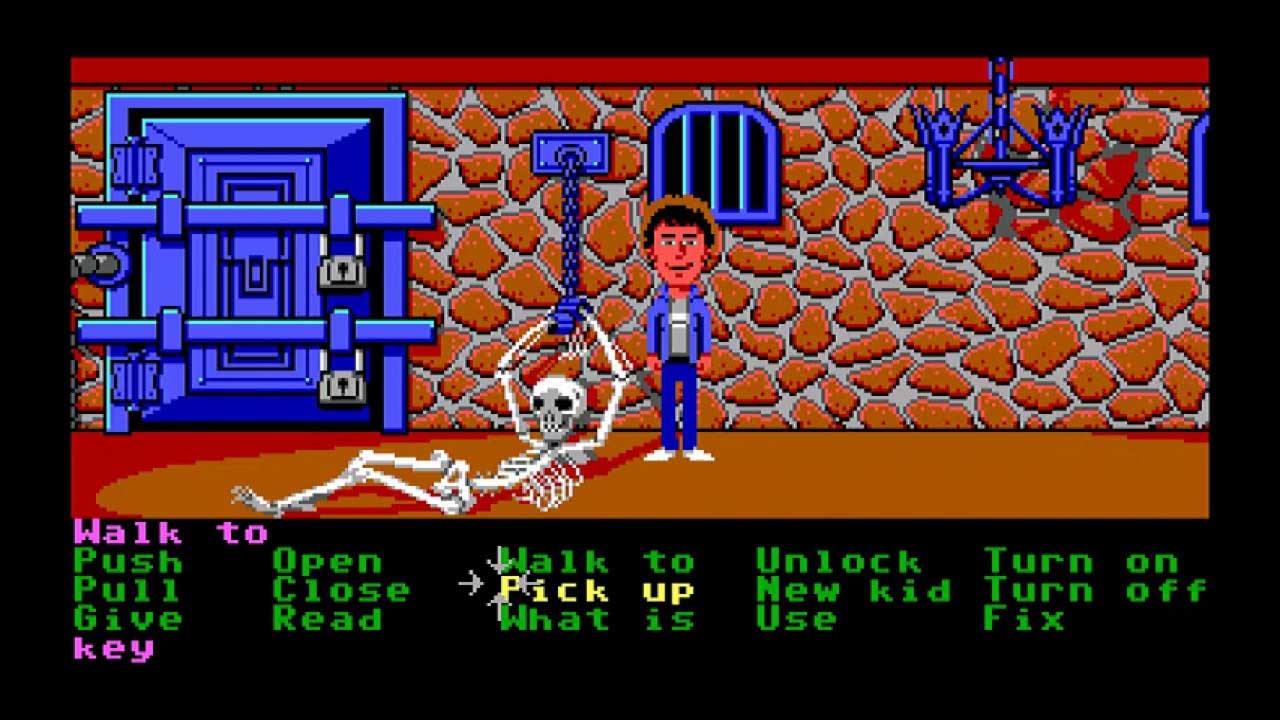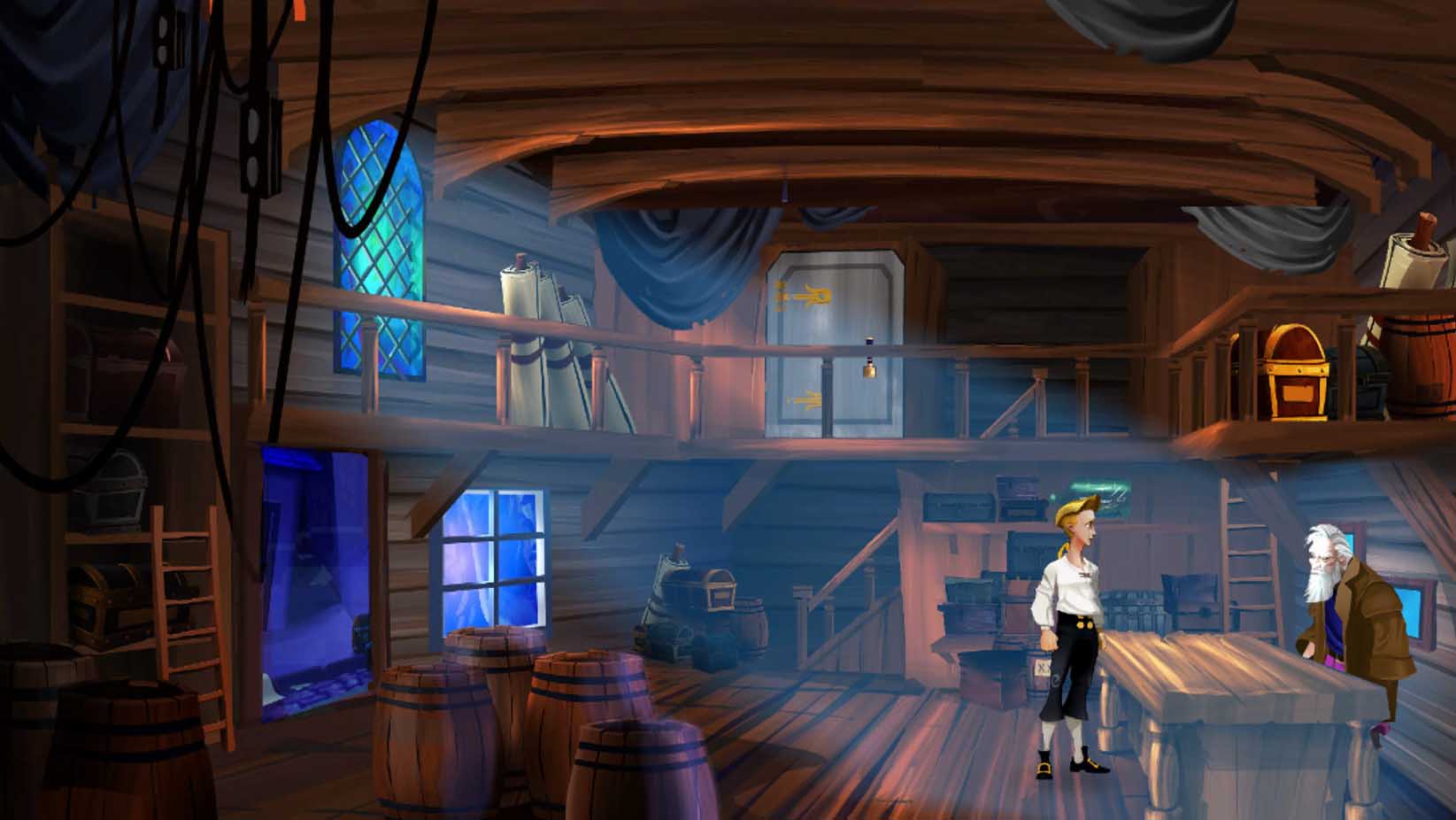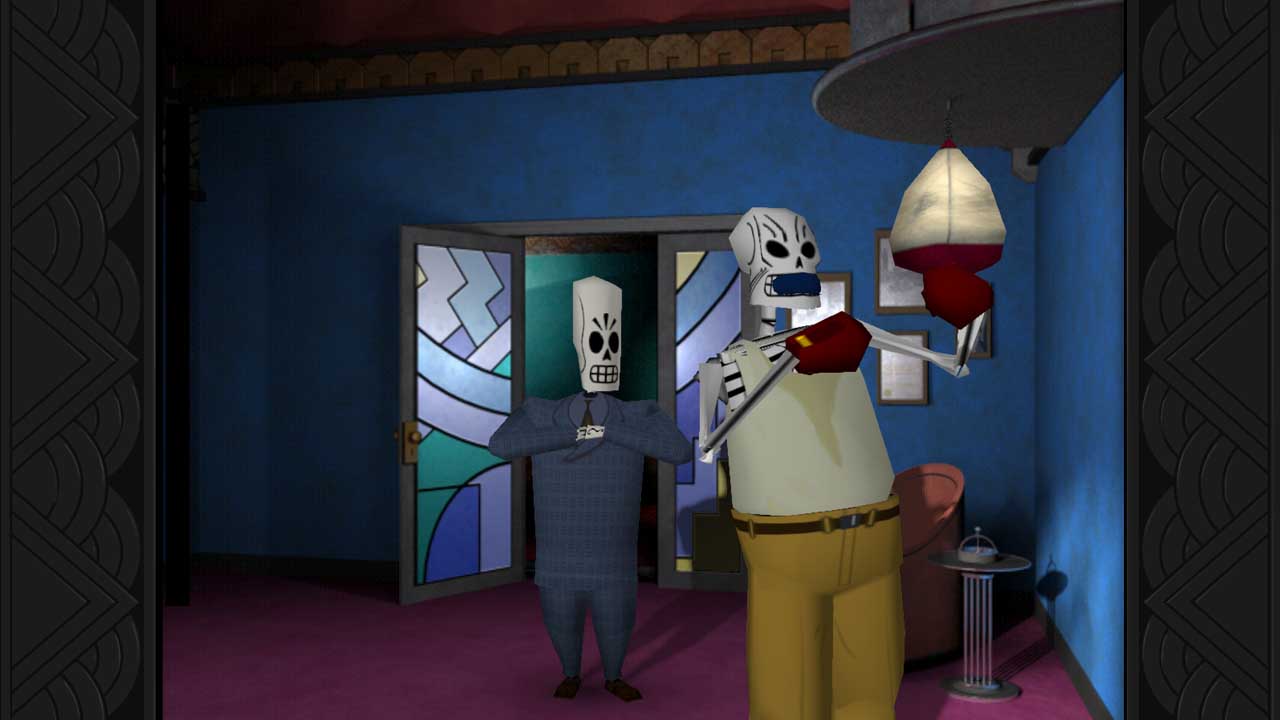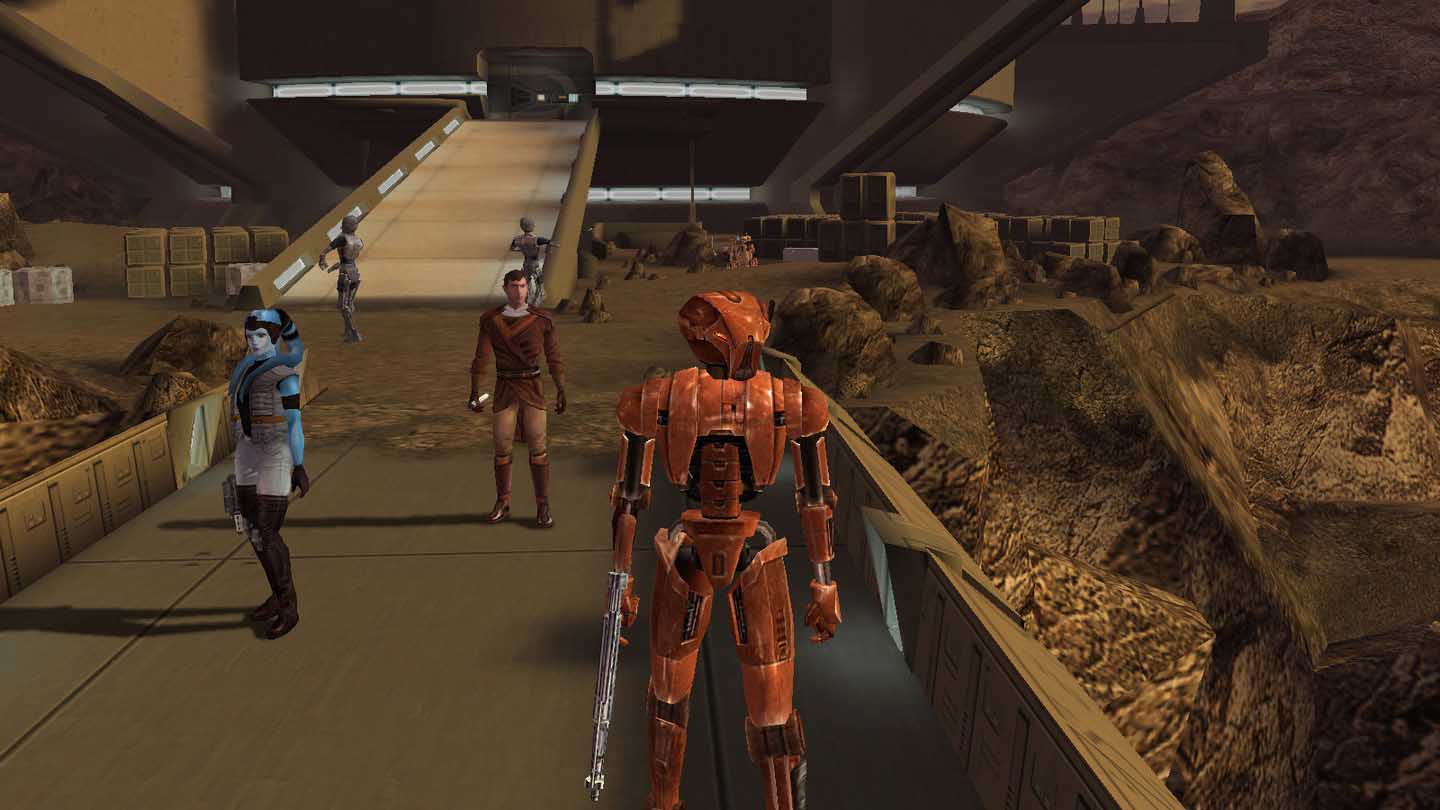Remembering LucasArts, the studio that changes the face of gaming | Laptop Mag
Remembering LucasArts, the studio that changes the face of gaming

In late January 2022, the long-dormant brand Lucasfilm Games constitute itself undergoing a surprise resurrection. It had been shuttered in 2022, post-obit the debut of Angry Birds Star Wars and Disney'southward acquisition of Lucasfilm. Effectually that time, yous could call the LucasArts of yore dead in the water, at least, in terms of how we used to view the company.
The terminate of LucasArts was the end of an era. For so long, it had been synonymous with some of the most memorable games in the industry, some of which helped launch the careers of many of its greatest creators. So when information technology was time to see the curtain endmost on LucasArts for the last fourth dimension, many felt pangs of pain and even frustration. That's why its recent revival is such great news.
Disney's reviving the Lucasfilm Games proper noun as the "official identity" for any games that utilise Lucasfilm IP. Information technology'll exist back in business, for all intents and purposes, but it's still not going to be its ain studio. LucasArts is returning, sure, but it won't be the aforementioned. It may never exist once again, which isn't what any fan wants to hear, simply at the very least, the name lives on.
But even if this is a revival in name only, it's still an important part of gaming history, even more so for PC gamers. If you've ever enjoyed betoken-and-click risk titles like 24-hour interval of the Tentacle or Grim Fandango, you're probably familiar with LucasArts' cadre of classics. Founded past George Lucas in 1982, it saw a multitude of successes during the '90s with indelible titles that take remained with players from childhood through their developed years.
Dorsum to the beginning
Looking back, it's non hard to see why the company was successful with the backing it had from the showtime. In 1979, George Lucas created the Lucasfilm Calculator Segmentation in 1979. This was his solution for exploring additional types of media beyond movies. The Computer Partition had two divisions: computers and graphics. The graphics section ended upwards spinning off in 1982 to become another massively popular company in the distant hereafter: Pixar.
Information technology wasn't until 1982 that Lucasfilm Games came into beingness. Not long later on opening the company, Lucasfilm Games worked alongside the legendary Atari for its outset projects: Ballblazer and Rescue On Fractalis, for the Atari 5200. Simply look, why no Star Wars titles to begin with? There'due south a very simple explanation for that.

At the time, the game development license for Star Wars was held by Atari. Thus, the first Lucasfilm Games releases weren't Star Wars titles, but completely original titles. Ballblazer was a rudimentary sports game that resembled a cross between basketball and soccer. Rescue on Fractalus was a similarly simplistic first-person shooter.
That wouldn't be until several games later, in 1990. At that point, the Games Group reorganized and spun off, eventually becoming part of the LucasArts Entertainment Company, also including Skywalker Sound and Industrial Lite & Magic. In a consolidating move between the two, the new visitor became Lucas Digital Ltd. The games partitioning was left to become, as you're no doubt enlightened, LucasArts.
He's a bedlamite
Only to look forwards, we need to look dorsum a bit. In 1987, Lucasfilm Games published Bedlamite Mansion, a creation by Ron Gilbert and Gary Winnick. It introduced players to the Edison family unit, a couple of tentacles, and a mad scientist. It was a comedic adventure that became extremely successful, somewhen evolving into what we now know as the SCUMM engine. Many of the LucasArts titles we've immortalized over the years utilized SCUMM, from Sam and Max Hit the Road to Loom.

Bedlamite Mansion was an of import part of advancing the manner players interacted with their onscreen avatars. Where information technology left off, later classics like Indiana Jones and the Last Crusade and Loom picked upward the slack. Both made significant improvements to their predecessors in terms of artful overhauls and gameplay. The genre was irresolute, being molded into something distinctly more than personable than always earlier, and LucasArts was at the forefront of what was, arguably, a renaissance for adventure gamers.
The Surreptitious of Monkey Island, the first game in the series, debuted in the early 1990s. It followed hapless pirate Guybrush Threepwood, a clueless pirate on a dangerous adventure. It was a render to class later previous endeavors (Loom, specifically) had deviated from the classic bespeak-and-click format, and it brought LucasArts Games dorsum with a vengeance.
Monkey Isle 2: LeChuck'due south Revenge would go on to inspire many other installments in the present day. The sequel made many tweaks to the original, including the introduction of iMUSE, a system that allowed the in-game MIDI tracks to sync with the action on-screen.

In 1993, the aforementioned sequel to Maniac Mansion rocked gamers' worlds, revisiting the wacky globe of the Edison family. Day of the Tentacle was a complete overhaul of the game that birthed it and integrated more fluid animations, voices, and a host of absolutely wacky master characters with a penchant for disaster. The infamous tentacles, as seen in Maniac Mansion, made a reappearance but this time with Purple gunning for globe domination and the descendants of the Edison family unit wreaking havoc upon all those they came in contact with. It was a brilliant successor to the original game, and an adventure that tested the limits of what could be washed with the medium. It injected copious amounts of clever sense of humor (and puzzles) into the already out-in that location situations.
The Bedlamite Mansion series was its own monster, merely LucasArts plant success with a previously established property — the Sam & Max games, especially Sam & Max Hit The Road, which became a signature for the company. The antics of dog-and-rabbit detectives Sam and Max were a perfect fit for those already interested in LucasArts' brand of humor.

Several other adventure titles rose to prominence soon after, each within the 2d realm — The Dig, Full Throttle, and an additional Monkey Island adventure — The Expletive of Monkey Island — all distinctive variants on a theme. Simply as the '90s were drawing to a close, something that packed a little more dial was necessary. The SCUMM engine was retired, and the Grim engine took its place.
A SCUMMy future
Grim Fandango was the first to use the aptly-named engine, and also the kickoff run a risk from LucasArts to utilize a fully 3D environment. Stylized characters, an interactive environment in which players used the keyboard to move around and complete various actions, and full-motion video cut scenes ready Grim Fandango, Tim Schafer's last work for LucasArts, apart from the rest of the pack. It garnered a stiff cult following as well equally rabid fans looking for some other rendezvous with Manny Calavera.

Escape from Monkey Isle was the second title to utilize 3D graphics and the fourth entry into the Monkey Isle mythos. Information technology also marked ane of the final take a chance games that would run into the light of mean solar day — it received a PlayStation 2 and macOS nine release too, and enjoyed success as one of the newest "renovated" series entries, but things started to ringlet downhill from there.
Several planned projects were canceled, releases were conceived and and so immediately cut short, and when discussion got out that Sam & Max: Freelance Police was well-nigh to striking, the project was swiftly cut down in 2004. LucasArts' reasoning for stifling the next installment of the buddy cop story was simply "current marketplace realities and underlying economic considerations."
In the afterward years, later the days of Escape from Monkey Isle and Grim Fandango, information technology was easy to encounter that indicate-and-click adventure games were no longer in demand. It was an unfortunate trend for LucasArts and one that played a role in the once-prosperous visitor'southward conclusion to pursue other projects.
A galaxy far, far away
The end of hazard games didn't mean the terminate of LucasArts, however. Later shifting creative energies to tackling other genres, some brilliant releases were spawned. For instance, Ten-Fly, Star Wars: Rebel Assault, Jedi Knight, Jedi Knight 2: Jedi Outcast, and other miscellaneous Star Wars titles helped proceed the visitor afloat.

Star Wars wasn't the only successful IP, either — LucasArts struck golden with the western-themed Outlaws and the quirky Armed and Dangerous likewise in the late '90s and early 2000s. Suffice it to say, the studio'southward involvement with the LucasArts/BioWare joint venture Knights of the Old Republic remains to date one of its largest victories outside of the point-and-click adventure realm. Non just did LucasArts bring a sequel to the fold, but a similarly-themed MMO in the class of The Old Republic.
It's no underground that Star Wars was an invaluable goad when it comes to LucasArts' standing success — afterwards all, why wouldn't its founder seek refuge in the familiarity of his ain creations?
LucasArts would continue on to publish a variety of different Star Wars titles over the late 2000s. Those sci-fi adventure games became the bulk of what the company created, all the fashion through 2022. By then, Disney had caused LucasFilm, and the LucasArts name was effectively no more.
A new legacy
Fast forward to 2022, and Lucasfilm Games is back. As we've already discussed, the company isn't returning as an entire entity. But the fact that the name remains for those of us who wish to feel a bit cornball is still good news.
And while we likely won't see a golden historic period of games as nosotros did with archetype signal-and-click titles, the fantabulous Star Wars games, or even the introduction of SCUMM one time more, we'll still always accept 1 matter: the legacy of LucasArts and Lucasfilm Games.
Source: https://www.laptopmag.com/features/remembering-lucasarts
Posted by: williamsbour1950.blogspot.com


0 Response to "Remembering LucasArts, the studio that changes the face of gaming | Laptop Mag"
Post a Comment